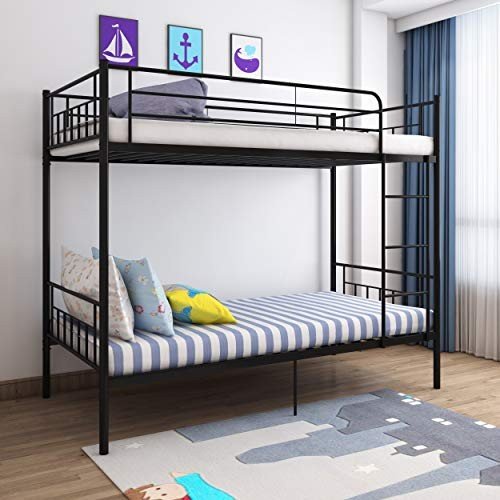The Ultimate Guide to Bunk Beds for Children: Safety, Styles, and Benefits
When it pertains to styling a kid's room, moms and dads often face the dual challenge of optimizing space while guaranteeing convenience and performance. Bunk beds have emerged as a popular solution that addresses these requirements, using not just sleeping plans but likewise adding to a space's visual. In this extensive guide, we will explore different aspects of children's bunk beds, concentrating on their benefits, security functions, designs, and factors to consider for parents contemplating this purchase.
Table of Contents
- Benefits of Bunk Beds
- Security Features to Consider
- Types of Bunk Beds
- Design and Style Options
- Upkeep Tips
- Regularly Asked Questions (FAQs)
1. Advantages of Bunk Beds
Bunk beds offer numerous advantages for kids and their moms and dads. Here are some crucial benefits:
- Space-Efficiency: Bunk beds are an outstanding service for smaller spaces. By stacking malikgolas.top on top of another, more floor space is offered for play, storage, or research study areas.
- Economical: When kids share rooms, bunk beds can reduce the requirement for buying 2 different beds, hence saving money.
- Promotes Social Interaction: Bunk beds can assist siblings or buddies bond by sharing a space, developing opportunities for social advancement.
- Enjoyable Factor: The principle of sleeping "up high" includes a spirited element to bedtime, making the transition to sleeping alone simpler for some children.
- Versatile Design: Bunk beds come in numerous designs, colors, and designs to match any space theme, permitting modification that shows the kid's personality.
2. Safety Features to Consider
Security is critical when it comes to children's furniture, particularly in the case of bunk beds. Here are some vital security features to examine:
| Safety Feature | Description |
|---|---|
| Durable Construction | Frames made of strong wood or metal are chosen. |
| Guardrails | Should be at least 5 inches high and extend along both sides of the upper bunk. |
| Ladder Design | Ensure ladders are firmly attached and have non-slip steps. |
| Mattress Size & & Fit | Must fit snugly within the frame to prevent gaps. |
| Weight Limit | Constantly abide by the manufacturer's weight limitation recommendations. |
3. Types of Bunk Beds
Bunk beds come in several styles, dealing with various requirements, choices, and room sizes. Here are some typical types:
- Standard Bunk Bed: The many standard type, with one bed on top of another.
- Loft Bed: Features a high upper bed with space below for a desk or play area.
- Futon Bunk Bed: Combines a top bunk with a futon on the bottom, offering flexibility for seating and sleeping.
- L-Shaped Bunk Bed: This style has the top bunk set at a perpendicular angle to the bottom, creating a little corner area.
- Triple Bunk Bed: Accommodates 3 children utilizing stacked beds, suitable for big households or pajama parties.
4. Style and Style Options
When it pertains to selecting a style for kids's bunk beds, the options are essentially limitless. Here are some popular styles:
- Traditional Style: Often made of wood, these bunk beds include ornate details and are perfect for traditional or rustic-themed spaces.
- Modern Style: Characterized by clean lines and minimalist styles, contemporary bunk beds can be made from metal or wood.
- Themed Bunk Beds: Some brand names use bunk beds formed like castles, cars, or playhouses, making bedtime less of a chore.
- Convertible Bunk Beds: These can be separated into two individual beds, offering flexibility as kids grow.
- Colorful Options: Bunk beds in vibrant colors can add a sense of joy and playfulness to any room.
5. Upkeep Tips
Keeping a bunk bed is vital for durability and safety. Here are some tips:
- Regular Inspections: Check for loose screws or bolts every few months and tighten them as needed.
- Cleaning: Wipe down frames frequently to avoid dust build-up; consider using a vacuum for hard-to-reach locations.
- Mattress Care: Rotate bed mattress routinely and utilize protective covers to extend their life.
- Expect Wear and Tear: Look for any indications of damage in the wood or metal and think about replacing parts if needed.
- Teach Kids Safety Rules: Encourage kids to use ladders correctly and ensure they comprehend the security features of their bed.
6. Often Asked Questions (FAQs)
Q1: What age is appropriate for oversleeping a leading bunk?
A1: Typically, kids aged 6 and older are recommended for upper bunk sleeping, as they have the needed motor skills to climb up securely.
Q2: Do bunk beds come with a mattress?
A2: Most bunk beds are offered as frames only, so you will require to buy mattresses independently. Guarantee that the mattress fits the frame snugly.
Q3: Can bunk beds be separated later on?
A3: Many styles allow conversion into 2 specific beds, providing flexibility for future requirements.
Q4: How can I guarantee my child's safety on a bunk bed?
A4: Comply with security requirements and make sure guardrails, a durable frame, and a protected ladder are in location.
Q5: Are there weight limitations on bunk beds?
A5: Yes, constantly inspect the maker's requirements relating to weight limits to guarantee security.
Bunk beds for children can serve numerous purposes while making sure safety and design. With diverse designs and models available on the market, parents can discover an unit that not only takes full advantage of bed room space but likewise reflects their child's special tastes. Just like any furniture, understanding safety features, maintenance, and how they suit a kid's lifestyle will make sure that these beds remain a useful furnishings solution for several years to come.
Through careful consideration and adherence to security guidelines, bunk beds can provide a lasting, enjoyable, and practical sleeping service that kids enjoy.

